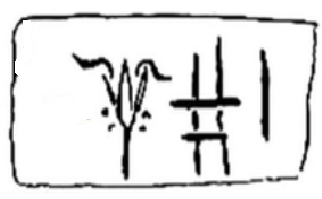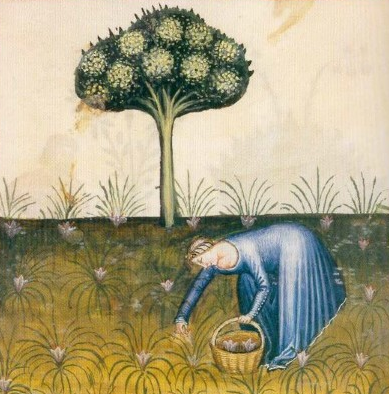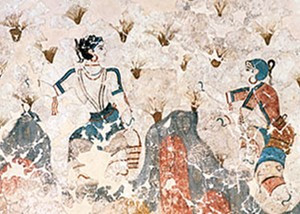
inspired by Saffron

Saffron in the ancient world
Minoan Linear B tablet with saffron pictogram
Saffron was used extensively in England in the Middle Ages for cookery, dyes and medicinally. In our farm kitchen, we have tried out myriad saffron recipes - some with great success and some with less! For the adventurous, there are saffron recipes from the Mediaeval era such as Oysters in Grey Bastard or Ballock Broth (which actually contains eels)!
Saffron has been highly prized by cultures around the world and many uses have been found for it
- not just in the kitchen –
Cleopatra bathed in it, Alexander the Great dyed his hair with it and Mediaeval nuns got high on it (or so they say!)


Saffron gatherers
A Minoan fresco, Santorini
England was once a European saffron-growing hub. One story tells that saffron first came to England hidden in the staff of a pilgrim who had smuggled it out of the Middle East and planted it when he returned home.
Blooming Saffron!
Saffron is wonderfully versatile, bringing an earthy richness to a wide variety of recipes. Saffron can be used as whole threads or ground as you choose and each individual cook tends to end up with their personal preference.
Some people speak of allowing saffron to "bloom", but not in the horticultural sense!
Essentially, this is the traditional and most effective way of getting the best flavour, colour and goodness from your saffron by infusing it in a liquid.We feel that saffron should be infused in warm rather than boiling liquids in order to preserve the beneficial compounds found in saffron. Cold infusions should be left for longer to extract the maximum goodness.
We like infusing saffron in warm water, oil or cream generally. For some recipes, such as ice cream, it can be quite fun to place the saffron on an ice cube and allow it to infuse as it melts.



